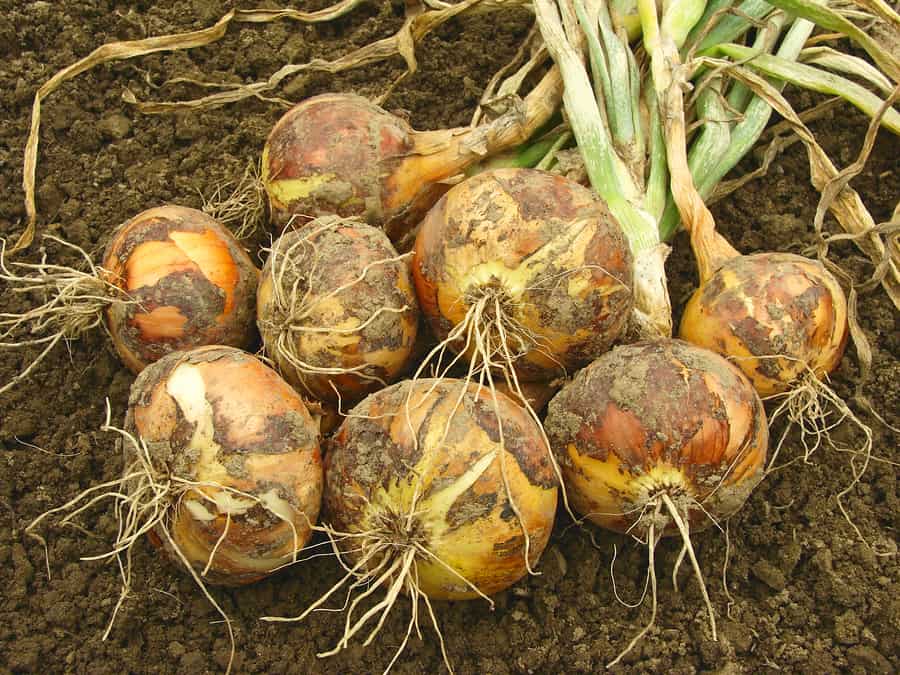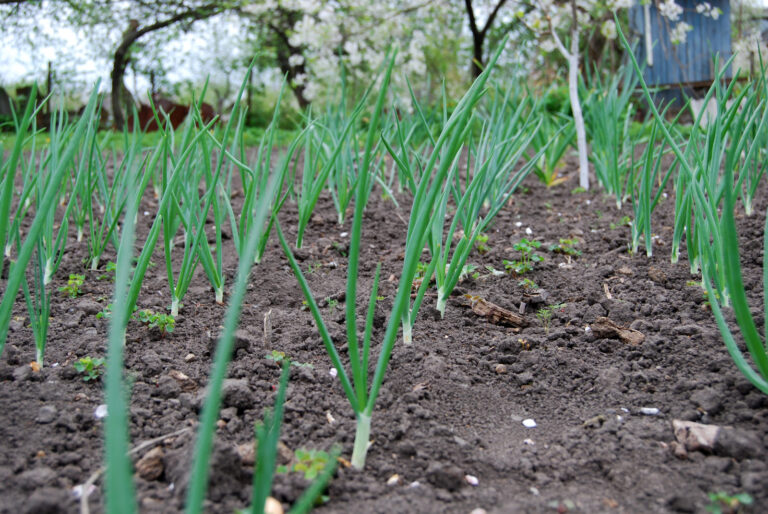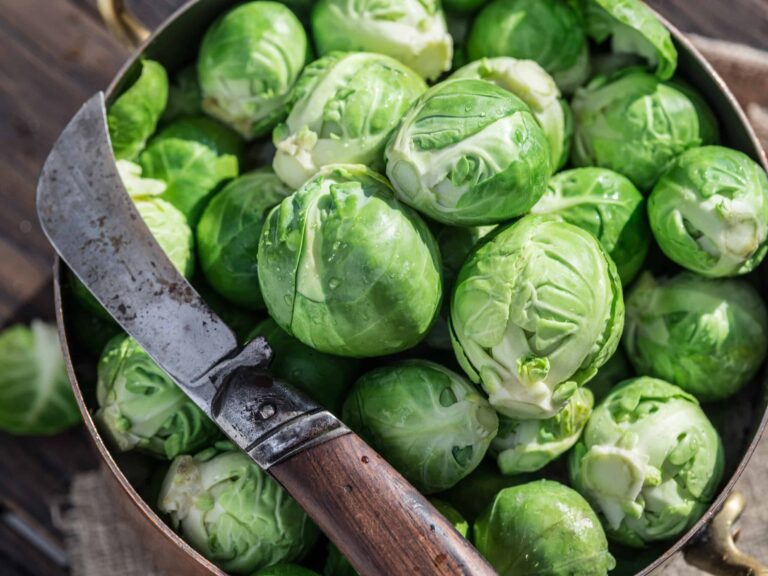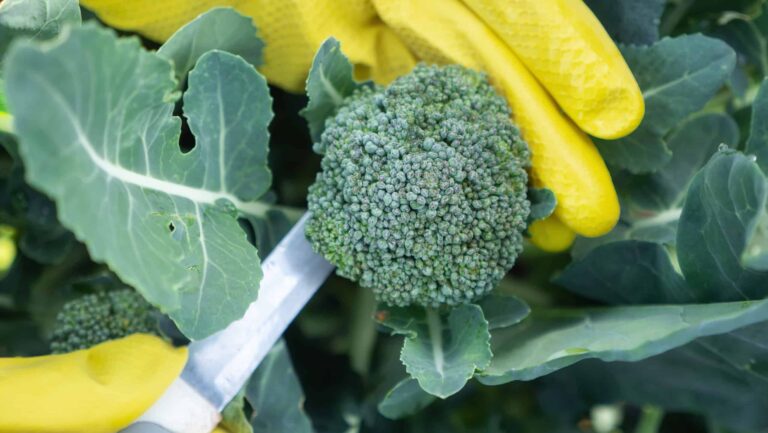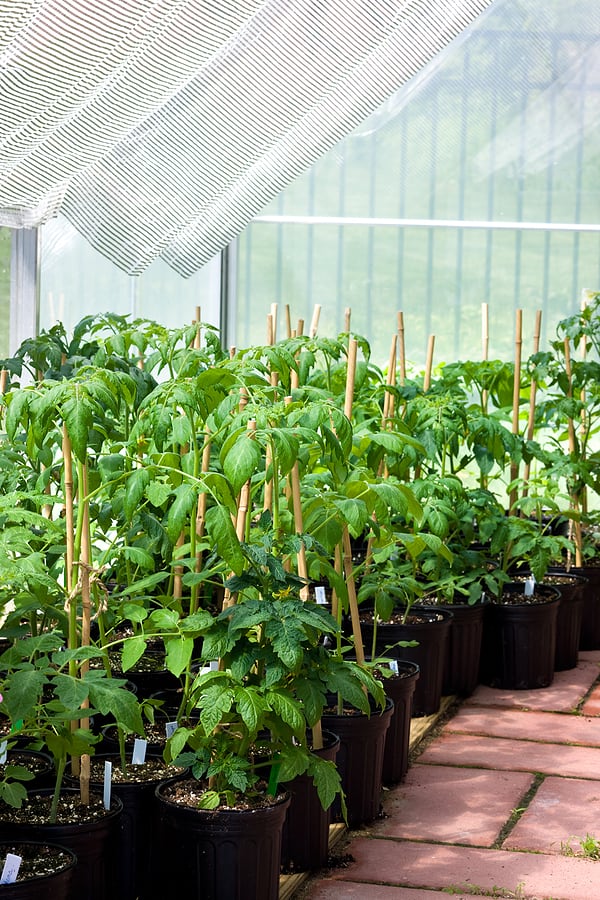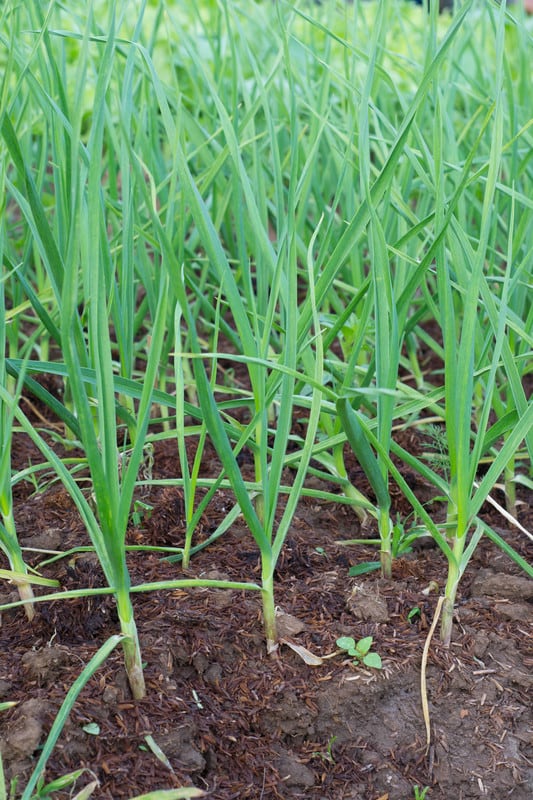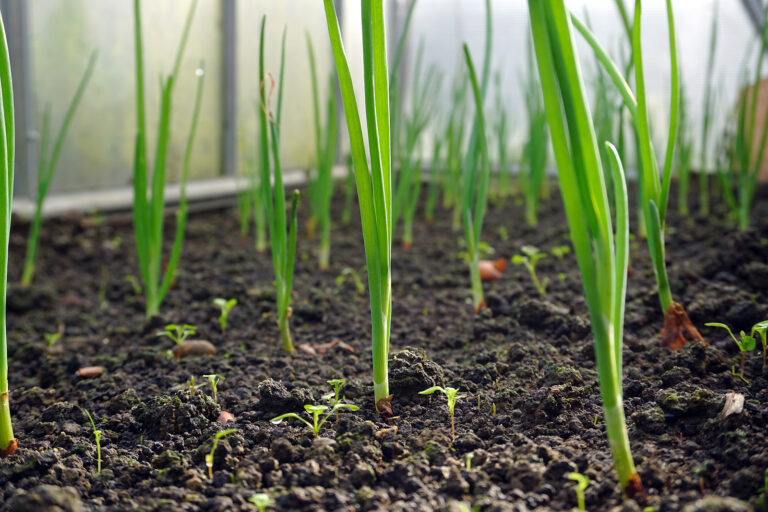How to Harvest and Store Onions
Harvest bulb onions when they reach full size, about 90 to 100 days after sowing. Harvest the leafy tops of green onions any time after the plant has grown 6 inches tall or taller.
Bulb onions—also called main crop onions–are commonly sliced or chopped and served raw in salads or on hamburgers or sandwiches or cooked in soups and stews.
The stalks and grassy tops of bulbless green onions—also called bunching onions, scallions, or spring onions—are commonly eaten raw in salads, dips, and stir-fries or cooked in soups.
Related articles:
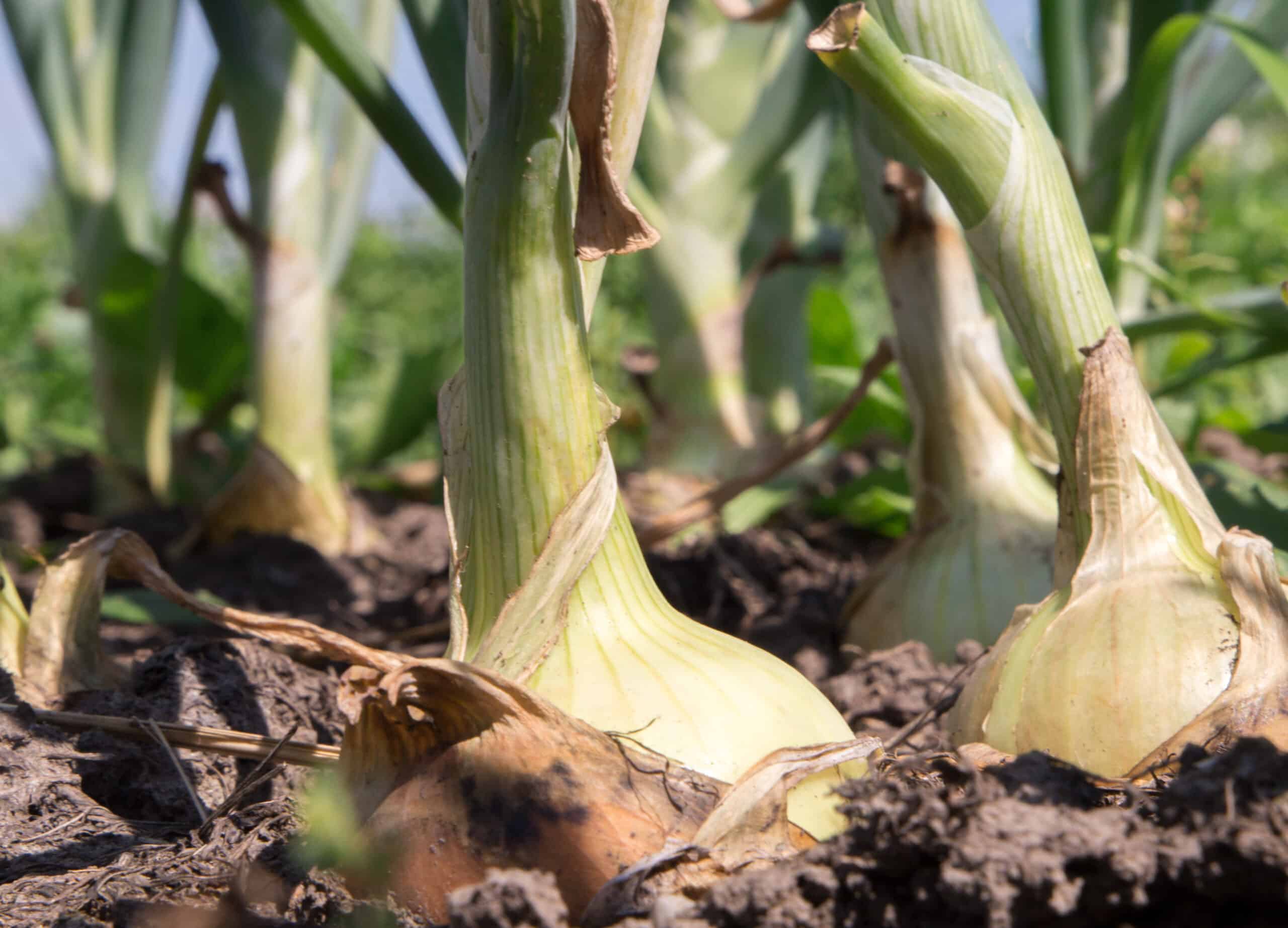
When to harvest onions
- Green onions: Harvest green onions when they are big enough to use—commonly when the stems are ½ to 1 inch in diameter. Green onions mature about 7 to 8 weeks after sowing but can be used much sooner.
- Onions for drying and storage: Harvest full-sized bulb onions for drying and storage when half to three-quarters of the strappy green foliage has turned yellow and fallen over. Bulb onions for storage mature about 90 to 110 days after sowing.
- Sweet onions: Harvest full-sized sweet-tasting slicing onions—also known as Bermuda or Spanish onions—when half to three-quarters of the strappy green foliage has turned yellow and fallen over.
How to harvest onions
- Lift bulb onions by hand or with a garden fork. You can lightly moisten dry soil the day before lifting bulb onions.
- Loosen the soil around each bulb before you lift; damaged onions are quick to rot.
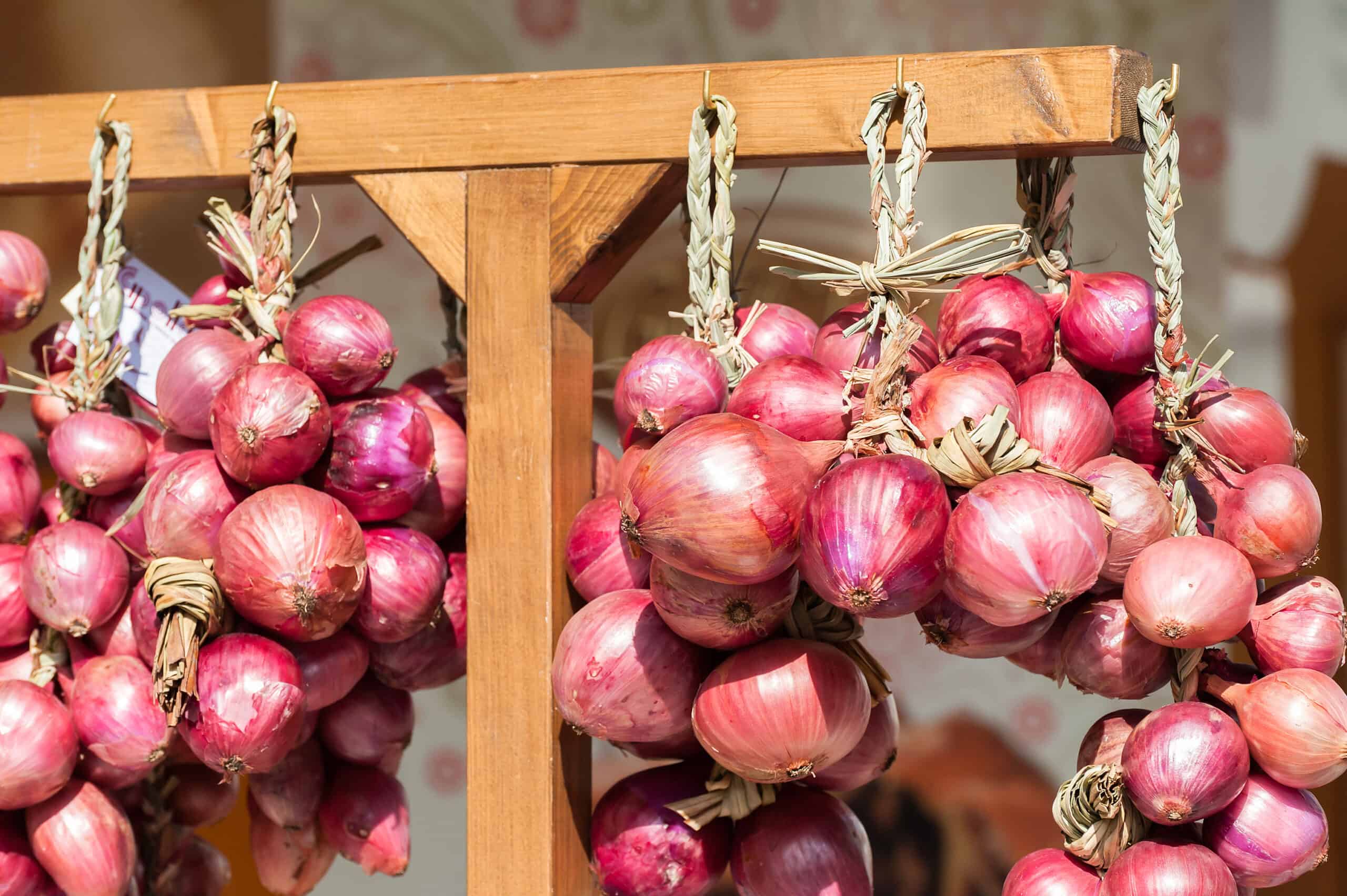
How to cure bulb onions for storage
- Maincrop onions for storage should be cured before they are stored.
- Start the curing process a week before harvest by withholding water and partially severing the roots with a spade. (This will allow their thick, moist necks to dry preventing rot.)
- After you fully lift the bulbs, let the bulbs dry for a few days on top of the ground—cover the bulbs with foliage to prevent sunburn–or spread them out in a shaded, warm, dry, well-ventilated place.
- Dry bulbs until their skins are papery—usually 2 to 10 days outdoors and about 2 weeks indoors in a well-ventilated spot.
- When the neck of a cured onion is tight and the outer scales are dry, cut the tops back with a garden pruner to about one inch and clip the shriveled roots. Drying seals the top of the onion and keeps the bulb from forming a seed stalk. (Don’t allow bulbs to form seed stalks; that will leave them woody and unsuitable for storage and eating.)
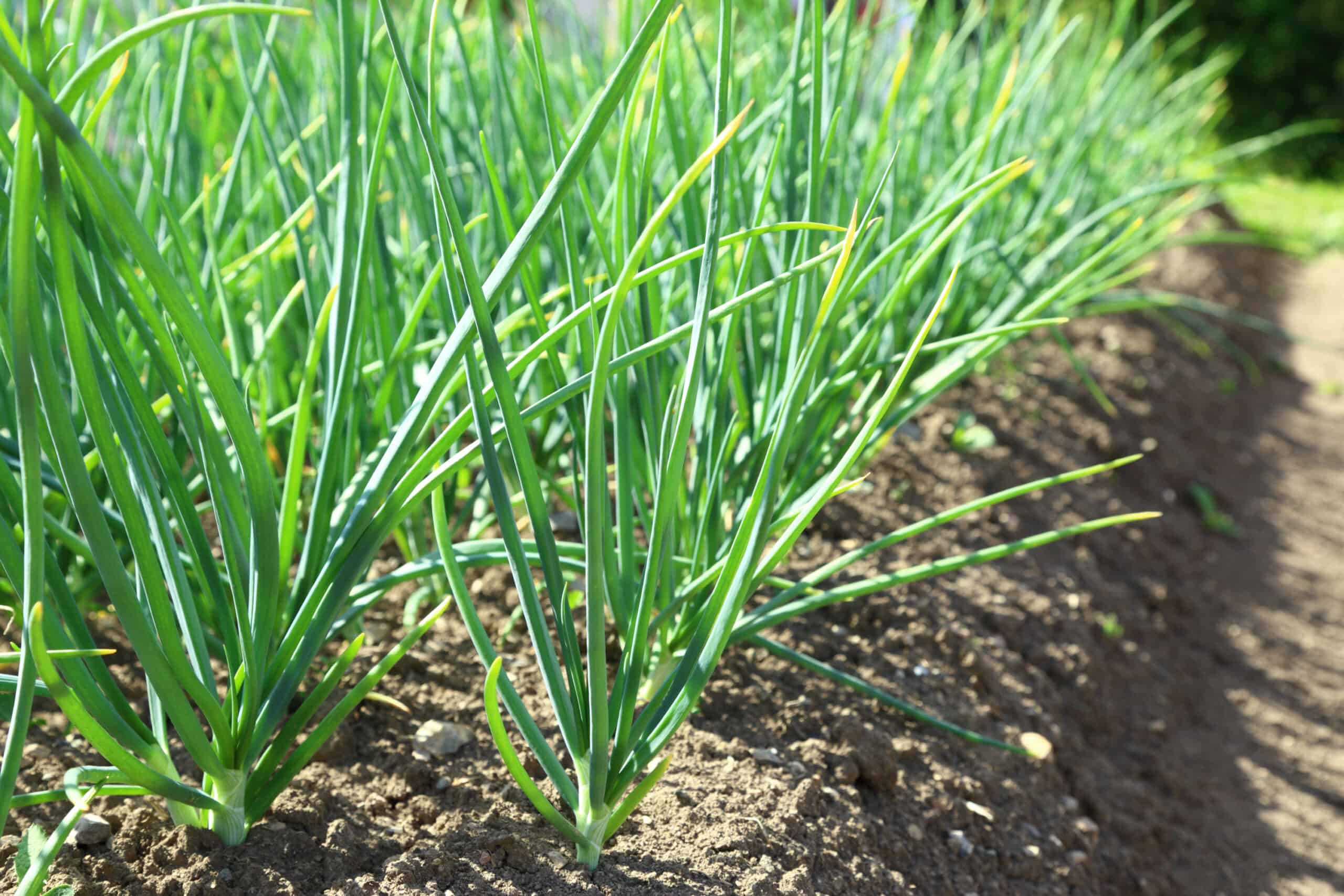
How to store onions
- Store bulb onions in a cool (35°-40°F/2°-4°C), dry, well-ventilated place. Store bulb onions in a hanging mesh bag if possible. Cured bulb onion will store for 5 to 8 months. If you harvest bulb onions while some of the tops are still green, use them right away—they will not keep.
- Slicing onions should be used in a few weeks. Slicing onions are thinner-skinned than storage onions and do not store well. (Sweet slicing onion varieties include ‘Vidalia’, ‘Walla Walla’, and ‘Texas Supersweet’.)
- Store green onions in a perforated plastic bag in the vegetable crisper of the refrigerator. Green onions will keep for 3 to 4 weeks.
Onion Growing Hub
Start here: The Ultimate Onion Growing Guide: From Seed to Harvest
🌱 Planning & Varieties
- How to Choose the Best Onion Varieties for Your Region – Match flavor, storage, and climate to your garden.
- Daylength and Onion Growth: Understanding Short, Intermediate, and Long-Day Varieties – Pick the right type for your latitude.
- Growing Bulb Onions: Pick the Right Variety for Your Garden – Choose the right variety for where you live.
- Onion Sets vs. Seedlings vs. Seeds: Which Is Best for Your Garden? – Pros and cons of each planting method.
🌿 Planting & Starting
- Step-by-Step Guide to Starting Onion Seeds Indoors Successfully – Timing and troubleshooting for strong transplants.
- Planting Onions Seeds and Sets – Here’s how to get started.
- How to Grow Onion Sets – You can grow your own onion sets from seed for next year.
- Growing Onions in Containers: Soil, Pots, and Care Tips – Small-space planting success.
- How to Grow Green Onions, Spring Onions, and Scallions – Learn how these alliums differ.
- How to Plant, Grow, and Harvest Welsh Onions – Learn to grow these mild-flavored members of the onion family.
🌞 Care & Maintenance
- Watering Onions for Optimal Growth: Techniques and Tips – How much and how often to water.
- Feeding and Fertilizing Onions: Organic and Synthetic Options – Nutrient needs for strong bulbs.
- Companion Planting with Onions: Plants to Grow With and Avoid – Beneficial pairings and plants to avoid.
- Onion Family Growing Problems: Pest, Disease, and Problem Controls – Natural control of thrips, maggots, and more; identifying and treating fungal or bacterial problems.
🧅 Harvest & Storage
- How to Harvest Onions at Peak Maturity for Best Storage – Signs onions are ready and how to cure.
- How to Harvest and Store Onions – Here are the basics for harvesting and storing onions.
- Onion Storage Techniques: Keep Your Harvest Fresh for Months – Best environments for long-term keeping.
🍳 Using Your Onions
- Cooking with Onions: Recipes and Tips to Bring Out Flavor – From fresh salads to caramelized dishes.
- How to Make Onion Soup with No Recipe – Enjoy this tasty classic!
Onion articles at Harvest to Table:
How to Grow Green Onions, Spring Onions, and Scallions
Growing Onion Bulbs: Pick the Right Variety for Your Garden
How to Plant, Grow, and Harvest Welsh Onions
How to Harvest and Store Onions
Onion Family Growing Problems: Troubleshooting
Onion Cooking and Serving Tips
Tasty Ways to Cook and Serve Shallots
How to Make Onion Soup with No Recipe
How to Plant, Grow, and Harvest Shallots
English Peas, Spring Onions and Roasted Almonds
Tropea Onion – The Red Torpedo
Garden Planning Books at Amazon:
- Vegetable Garden Almanac & Planner
- Kitchen Garden Grower’s Guide Vegetable Encyclopedia
- Vegetable Garden Grower’s Guide
- Tomato Grower’s Answer Book
More harvest tips:
Learn when and how to harvest your favorite vegetables for the best flavor and texture. Get storage tips for each crop. Click on the vegetable you are growing below.
- Artichoke
- Arugula
- Asparagus
- Beans
- Beets
- Broccoli
- Brussels Sprouts
- Cabbage
- Cantaloupe — Melons
- Carrots
- Cauliflower
- Celery
- Chard
- Collards
- Corn, Sweet
- Cucumbers
- Eggplant
- Endive and Escarole
- Garlic
- Jerusalem Artichoke
- Kale
- Kohlrabi
- Leeks
- Lettuce
- Melons
- Okra
- Onions
- Parsnips
- Peas
- Peppers
- Potatoes
- Pumpkins
- Radicchio
- Rhubarb
- Rutabaga
- Spinach
- Squash, Summer
- Squash, Winter
- Sunchokes
- Sweet Potato
- Swiss Chard
- Tomatillo
- Tomatoes
- Turnips
- Watermelon


